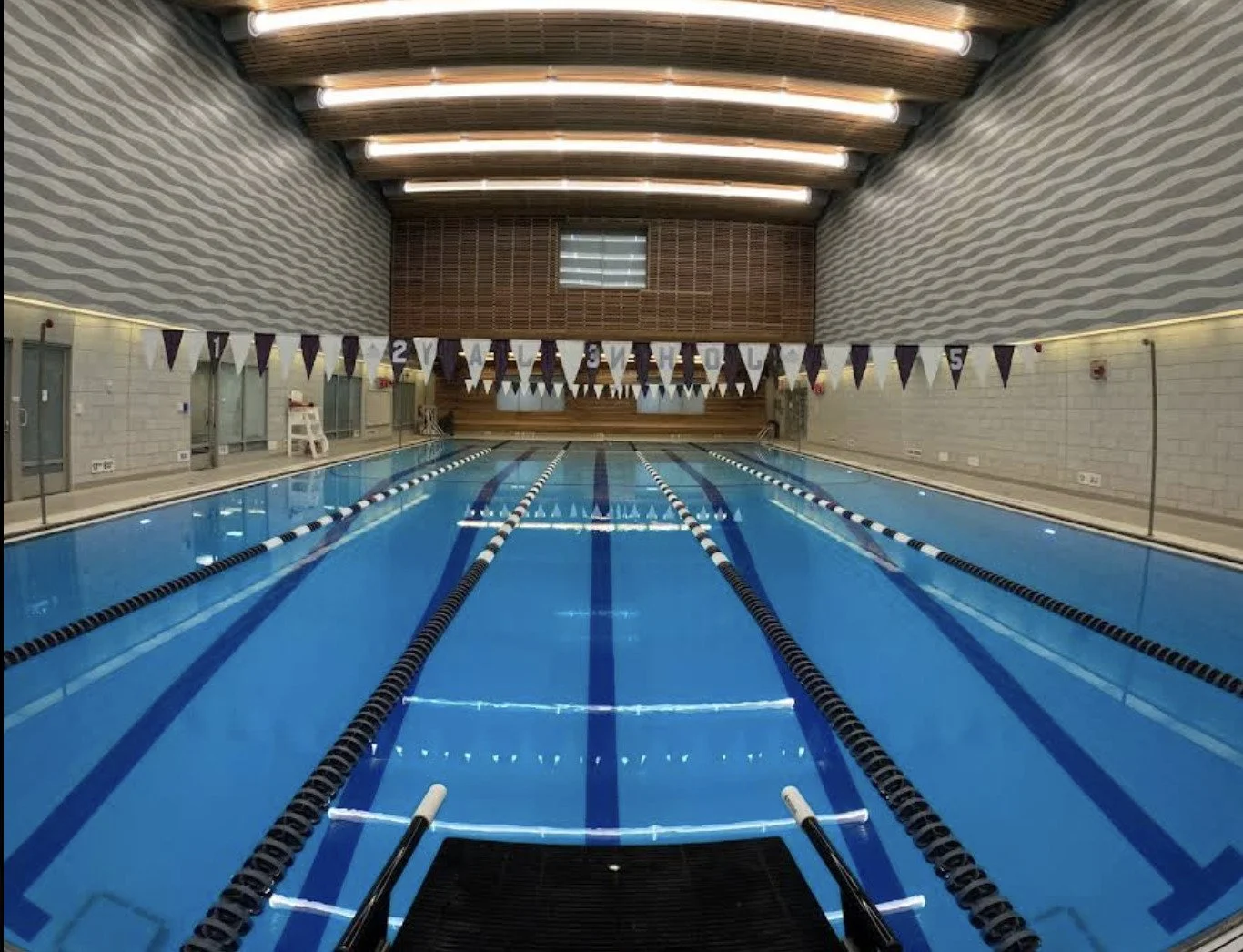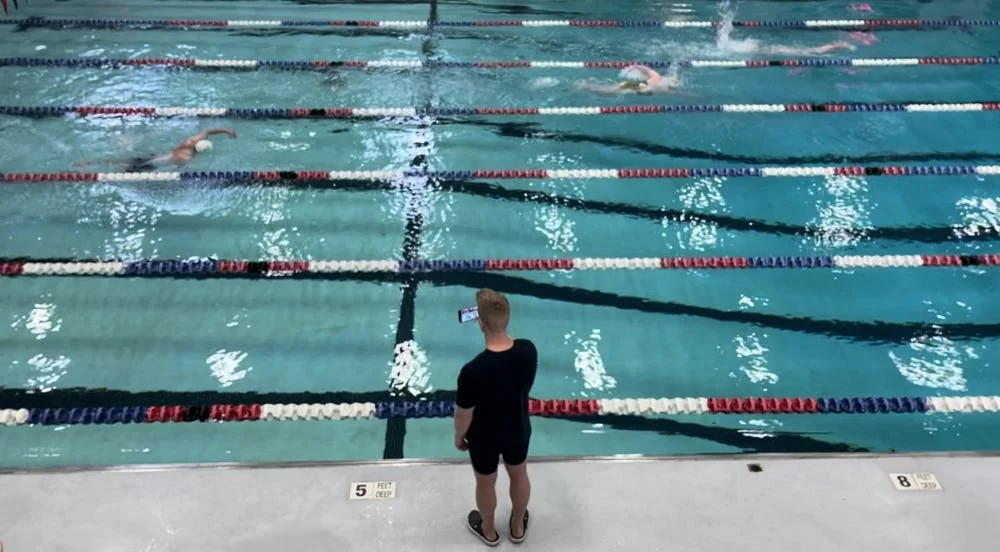How Many Laps Is a Mile in Swimming? Pool Sizes Explained
/“Coach, how many lengths do I need to swim to hit a mile?”
I hear this question all the time – from high school swimmers, open water triathletes, and even Masters athletes getting back in the water. And it’s a fair one, because a “mile” in swimming doesn’t always match the land-based version.
Let’s break it down and get clear – length by length.
Video: How to track your swimming mile
First, What Counts as a Mile in Swimming?
A standard mile is 1,760 yards, or 1,609.34 meters. But in swimming – especially in the U.S. – we often use “swimming mile” to refer to 1,650 yards, which is the common distance in competitive pool meets.
This can be confusing, but it’s become the accepted norm in U.S. swimming. Here's the quick breakdown:
Statute mile (land): 1,760 yards = 1,609.34 meters
Swimming mile (pool meets): 1,650 yards = ~1,508 meters
So when swimmers say “I’m doing a mile today,” they’re likely referring to 1,650 yards or 1,500 meters, depending on their pool.
Pool Length Matters: Length Conversions by Pool Type
To know how many lengths you need to swim a mile, you first lets define a length versus a lap. Often used interchangeably, a length is technical from one end of the pool to the other, A to B. A lap is a round trip to the other end and back, A to B to A.
Next we have to know your pool length.
🏊 25-Yard Pool (Standard U.S. Short Course Pool)
Most high school and college pools in the U.S. are 25 yards long. Here's your breakdown:
1 Mile (1,760 yards): 70.4 lengths
Swimming Mile (1,650 yards): 66 lengths
1500 meters (~1,640 yards): ~60 lengths
800 meters (~875 yards): 32 lengths
200 meters (~219 yards): ~8 lengths
Swim Tip: If you're training in a 25-yard pool, 66 laps gives you a solid “mile swim” by competitive standards.
25-Meter Pool (Short-course meters - Common in international training & community centers)
25-meter pools are often found in international or community pools. One meter = 1.0936 yards, so lap counts change slightly.
1 Mile (1,609 meters): 64.36 lengths
1500 meters (Olympic event): 60 lengths
800 meters: 32 lengths
200 meters: 8 lenghts
Coach’s Note: In a 25-meter pool, swimming 60 laps gets you to the Olympic-standard 1500m freestyle distance.
50-Meter Pool (Long-course meters - Olympic Standard)
This is the "long course" pool used in international competition and training.
1 Mile (1,609 meters): ~32.2 laps
1500 meters: 30 laps
800 meters: 30 laps
200 meters: 4 laps
Swimmer Strategy: A land mile in the pool is just over 32 lengths in a 50m pool – but if you're swimming 1500 meters, 30 laps gets you there.
1500 Meters vs 1650 Yards: Are They the Same?
Not quite, but they’re close enough for training purposes.
1500 meters = 1,640 yards
1650 yards = 1,509 meters
Most pool training plans and open water races treat these as interchangeable. Unless you're aiming to qualify for specific meets, don’t sweat the slight difference – just swim your full effort. With the extra walls in a short course pool, and a yard being slightly shorter than a meter, you can expect your mile in a short course yard pool (25yd) to be faster than in a short-course meter (25m) pool than in a long-course meter pool. (50m)
How to Track Your Laps Without Losing Count
If you’ve ever found yourself thinking, “Wait, was that lap 42 or 44?”, you’re not alone.
Here’s a quick look at helpful tools to track your laps and distance more accurately:
Lap Tracking Tips:
Wear a swim watch – Devices like the Garmin Swim or Apple Watch can auto-count laps.
Use the pace clock – Start each interval on the top of the minute to keep better track.
Break it into sets – Instead of 66 straight laps, swim 16x100 + 50 or 4x400 + 50 to mentally chunk the mile, and your pacing.
Use counters – Waterproof finger counters work well for long sets.
Need help picking a tracker? Check out our guide:
Best Swim Lap Counter Devices for Swimmers
Where to Swim Laps in NYC?
If you’re a New York swimmer wondering where to log your next mile, we’ve got you covered.
Explore the Best NYC Lap Swimming Options
When Should You Swim a Mile?
A mile is a great benchmark for swimmers at all levels. I often prescribe it for:
Endurance development – for triathletes and distance swimmers
Mental toughness – getting through 66 laps trains focus
Aerobic base work – building capacity without overtraining
But remember: excellence lives in the fundamentals. Swimming a mile with poor form can reinforce bad habits, and poor pacing. Always prioritize stroke technique, pacing, and form.
Mile Swim Training Example (25-Yard Pool)
Want to build toward a mile without jumping straight into 66 straight laps? Here's a simple structure I’ve used with high school athletes and adult swimmers alike:
Total: 1,650 yards
Warm-Up: 3 x 100 swim + 4 x 25 kick
Pre-Set: 4 x 50 drill/swim
Main Set: 3 x 300 steady @ :20 rest + 1 x 150 build
Cool Down: 100 easy
This breaks the mile into manageable sets and keeps the mind engaged. Adjust the interval based on your fitness.
Final Takeaway: Don’t Just Count Laps – Make Every Lap Count
Swimming a mile is a rite of passage in training – but it’s more than just endurance. It’s about control, pacing, and technique across distance.
Whether you’re in a 25-yard pool or training for open water, knowing how many laps make a mile gives you the structure to train smarter.
And that’s what we’re all about at Train Daly.
Ready to Level Up?
If you're ready to build endurance the right way – with technique-first progression – check out our Swim Training Services and Programs.
Dan Daly, CSCS
Coach · Former D1 Swimmer · Creator of the Train Daly Method
“Excellence lives in the fundamentals.”


